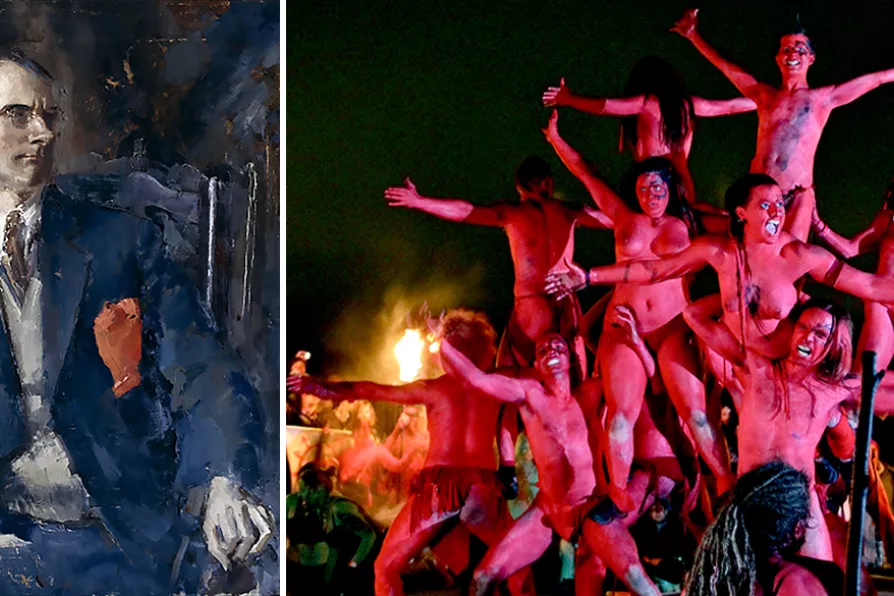ANDY HEDGECOCK picks out his cultural highlights of 2025

 LIBERATED ENERGY: (R) Beltane Fire Festival, Calton Hill, Edinburgh, Scotland, 2012; (L) Portrait of Sean O’Casey by Augustus John, 1926
[Stefan Schafe - Lich/CC; Public Domain]
LIBERATED ENERGY: (R) Beltane Fire Festival, Calton Hill, Edinburgh, Scotland, 2012; (L) Portrait of Sean O’Casey by Augustus John, 1926
[Stefan Schafe - Lich/CC; Public Domain]
SEAN O’CASEY was the first English-speaking dramatist of international significance to emerge from the proletariat. One of the recurring themes in his work is that of revolution. While in his early Dublin plays he controversially considered the Irish working class not yet ready for revolutionary change, his later works explore the potential for revolution.
O’Casey’s second last play, Figuro in the Night (1961), is about revolution and liberation. The play is set in a new suburb of Dublin, flanked by two monuments — one commemorating the fallen Irish who served in the British army during World War I, the other honouring those who died for Irish liberation. Both monuments document death.
The arrival of a third sculpture, a “Manneken Pis” statue in the city centre (in O’Connell Street), introduces a new note. In O’Casey’s play, it becomes a catalyst for a revolutionary uprising, where the people — especially the youth — overthrow the old order in a joyful, almost carnivalesque manner. The playwright focuses on the human dimension of the revolution, emphasising the liberation and reintegration into the nature of the whole person.

The recent speech by Cuba’s President Miguel Diaz-Canel is an affirmation of Amilcar Cabral’s revolutionary principle, writes ISAAC SANEY

On the centenary of the birth of the anti-colonial thinker and activist Frantz Fanon, JENNY FARRELL assesses his enduring influence












